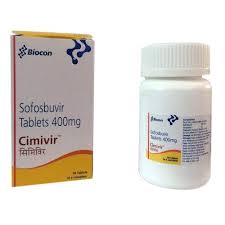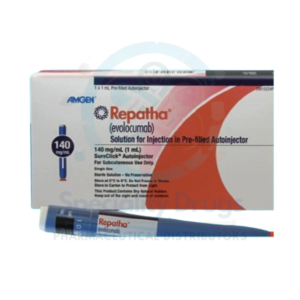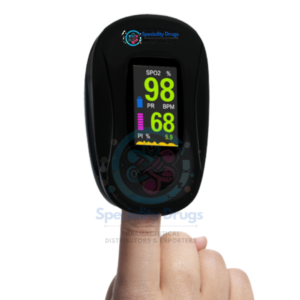What is EUDOMONAS-1?
EUDOMONAS-1 is a prescription antibiotic containing Piperacillin 1 g + Tazobactam 125 mg (commonly referred to as 1 MIU). It is a broad-spectrum beta-lactam antibiotic used to treat mild to moderate bacterial infections.
What is the Use of EUDOMONAS-1?
EUDOMONAS-1 is used to treat:
-
Mild to moderate respiratory infections
-
Urinary tract infections
-
Skin and soft tissue infections
-
Abdominal infections caused by susceptible bacteria
Benefits of EUDOMONAS-1
-
Effective against Gram-positive, Gram-negative, and anaerobic bacteria
-
Rapidly controls infections
-
Can be used for hospital or community-acquired infections
Side Effects of EUDOMONAS-1
Common side effects:
-
Nausea or vomiting
-
Diarrhea
-
Rash or mild allergic reactions
Serious side effects (seek medical attention):
-
Severe allergic reactions (anaphylaxis)
-
Liver or kidney dysfunction
-
Blood disorders (low platelets or white blood cells)
-
Severe diarrhea caused by Clostridium difficile
Important Notes
-
Dosage: Administered as an intravenous infusion as prescribed by a healthcare professional.
-
Precautions: Patients with kidney or liver problems, or a history of penicillin allergy, should inform their doctor.
-
Storage: Store at 2–8°C (refrigerator) and protect from light.
1. What is EUDOMONAS-1 used for?
It is used to treat mild to moderate bacterial infections including respiratory, urinary, skin, and abdominal infections.
2. What are the active ingredients?
Piperacillin 1 g and Tazobactam 125 mg (1 MIU).
3. How does EUDOMONAS-1 work?
Piperacillin inhibits bacterial cell wall synthesis, and Tazobactam prevents resistance by inhibiting beta-lactamase enzymes.
4. How is EUDOMONAS-1 administered?
It is given intravenously (IV) by a healthcare professional.
5. Can it be taken orally?
No. EUDOMONAS-1 is not available in oral form and must be administered IV.
6. What are common side effects?
Nausea, vomiting, diarrhea, and mild rash.
7. What serious side effects should I watch for?
Severe allergic reactions, liver or kidney dysfunction, blood disorders, or C. difficile-associated diarrhea.
8. Can pregnant or breastfeeding women take it?
Only under doctor supervision, when the benefits outweigh the risks.
9. Can it be used for resistant bacterial infections?
Yes, it can be used for hospital-acquired infections, sometimes in combination with other antibiotics.
10. Can I take other medications with EUDOMONAS-1?
Always inform your doctor about all medications, especially other antibiotics or kidney-affecting drugs.
11. How long does treatment last?
Duration depends on infection type and severity, usually 5–10 days or as prescribed.
12. What if a dose is missed?
Missed IV doses should be administered by the healthcare team. Do not self-administer.
13. Do I need kidney or liver monitoring?
Yes. Regular kidney and liver function tests are recommended during therapy.
14. How should EUDOMONAS-1 be stored?
Store 2–8°C, protect from light, and use within the recommended timeframe.
15. Who should avoid EUDOMONAS-1?
People allergic to penicillin or beta-lactam antibiotics, or patients with severe kidney or liver impairment, unless closely monitored.






Reviews
There are no reviews yet.